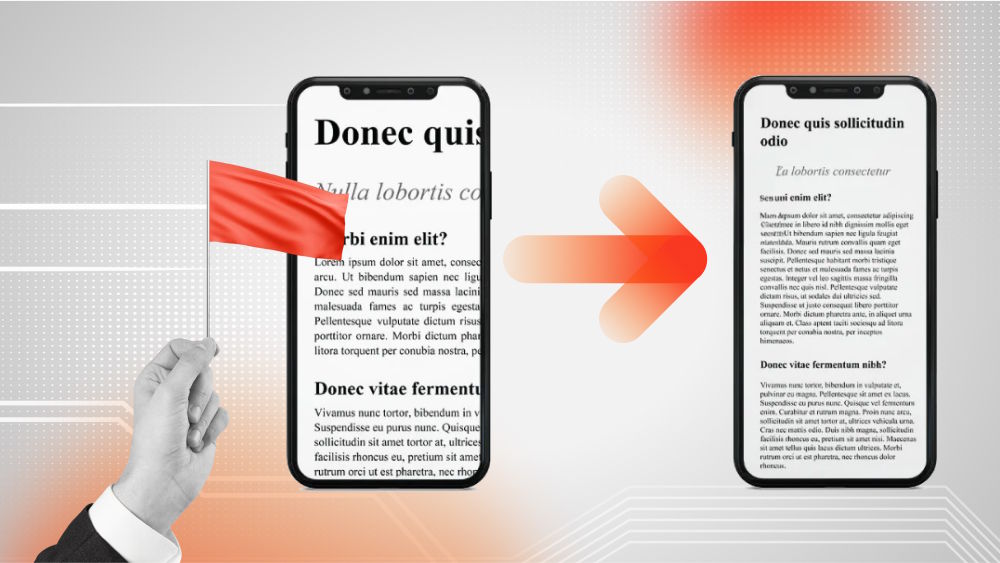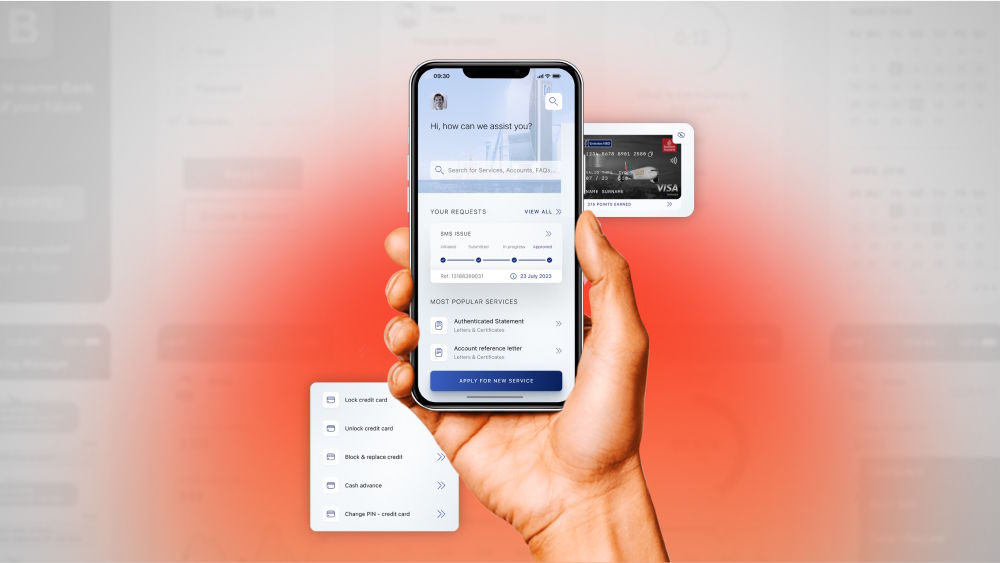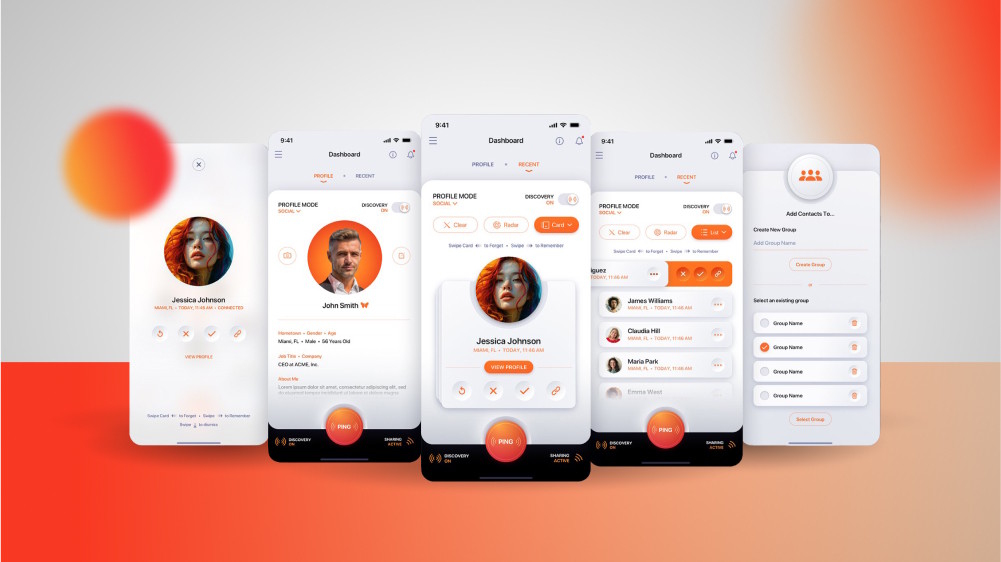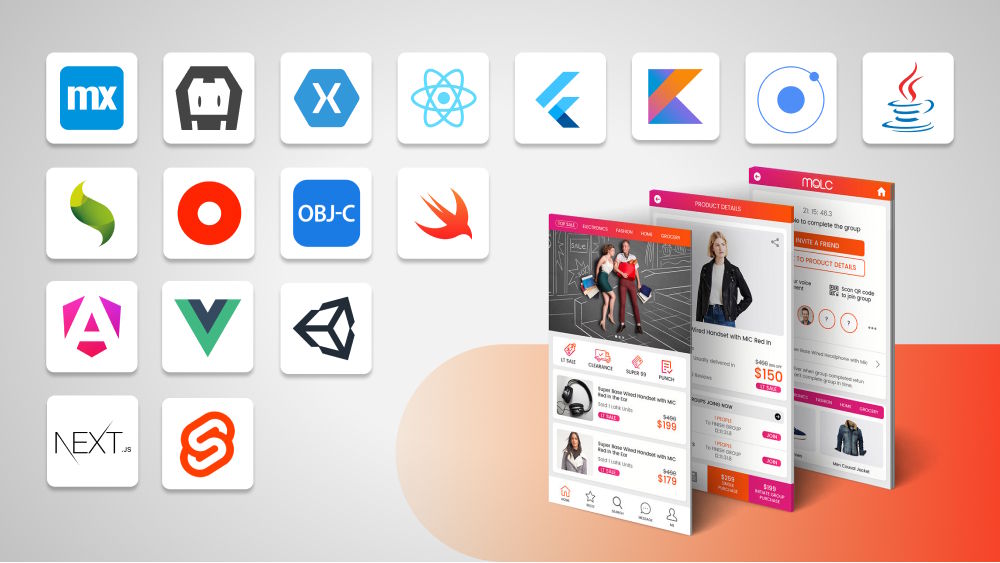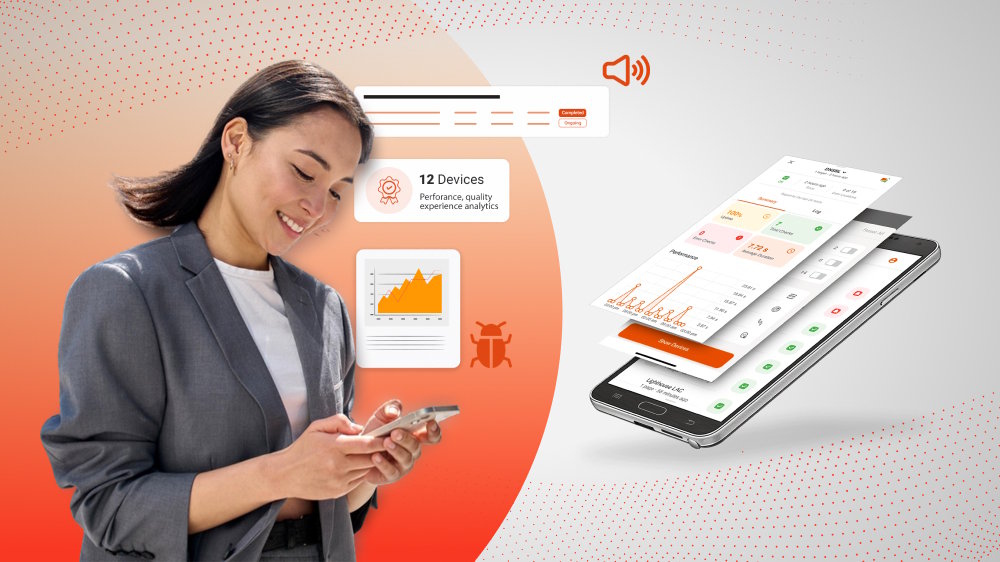
App Development for Startups: Which Type Fits Your Budget, Timeline, and Goals?
Got a brilliant business idea but still confused about which app development path is best for your startup? Does the limited budget constrain your big ambitions? This quick guide breaks it down so you can build smarter and faster. Discover the development style that fuels growth without blowing your timeline or wallet.

Content Map
More chaptersApp development is a major investment that every startup should focus on to attract market share and to encourage profound customer interaction. So, why do startups need to invest in app development?
- Brand Visibility: A mobile application ensures that your startup is visible to them constantly, which enhances brand awareness.
- Customer Engagement: The ability to communicate directly with customers is an asset, which is rewarded with retention through apps.
- Revenue Generation: Apps provide various monetization opportunities, including in-app purchases, subscriptions, and ads.
- Competitive Advantage: An efficiently designed application will distinguish startups from competitors who rely only on websites or traditional ways.
However, aspiring entrepreneurs with innovative ideas face many crossroads on their route, and one of the most important ones would be the way of app development. Since 90% of startups fail within the first five years, and a considerable percentage of them can be attributed to such reasons as the absence of market demand, lack of funding, or improper digital solutions, the need to make wise decisions is enormous.
The challenge is finding a way through the various terrains of app development methodology. Should you choose the high performance of a native app, the wide coverage of a cross-platform system, or the speed of a PWA? All solutions have their tradeoffs in terms of development cost, time to market, long-term scalability, and the end-user experience. This article will attempt to demystify the above-mentioned difficulty by giving a clear roadmap on how to select the best type of app development for startups that would match the special budget requirement, exceptional timeline, and overall strategic business objective.
Understanding Your Startup’s Needs
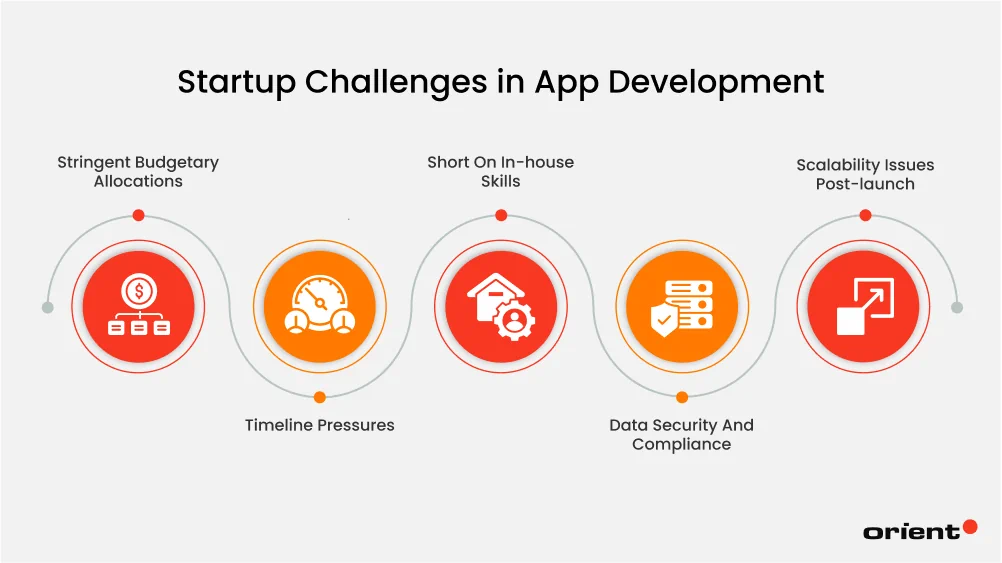
Every startup starts with ambition, but translating ideas into a successful app implies considering and resolving some concrete, practical limitations at a very early stage.
Startups usually have very stringent budgetary allocations, particularly during the initial development stages. The small amount of capital limits the size of the team, the extent of marketing, and may compel the founders to focus on functional features instead of best features. Financial planning is not only about saving money; it is about spending money based on realizable returns.
Another serious issue is timeline pressures. Numerous startups are competing against investor deadlines, product launch opportunities, or competitive market openings. A three-month lag in such situations may equate to an entire buying season lost, or a competitor product becoming dominant. Software development timescales have to be factored into time management strategies and so do external dependencies, such as regulatory approvals, or manufacturing logistics.
It is necessary to clear up on core business objectives, especially in regard to monetization. Depending on the subscription, advertisement-heavy, or transactional service basis of the strategy, these choices affect the design and marketing of the products. A startup that wants to monetize by using user engagement has to incorporate both analytics and retention early on.
The majority of fledgling teams are short on in-house skills across various domains, such as legal compliance, cybersecurity, or user experience design. It might not be realistic to hire domain experts in each and every different type of role, and most startups can end up using a combination of consultants, online materials, and a combination of trial and error. Such disparity is most prominent in technical decisions wherein an incorrect move in architecture may spiral to prohibitive maintenance or unusable infrastructure.
Overlooking data security and compliance can be fatal, particularly for companies handling user data or operating across borders. Startups often focus on MVP (minimum viable product) delivery, sidelining protocols like data encryption, audit trails, or GDPR compliance. But waiting until scale to address these issues can lead to breaches, fines, or loss of customer trust, making early, proactive attention to data governance non-negotiable.
Finally, scalability issues post-launch can stifle momentum. An app that performs well with 100 users may crumble under 10,000 if infrastructure isn’t built to grow. This includes database performance, API limits, and customer support mechanisms. The goal isn’t to over-engineer, but to design flexible systems with upgrade paths baked into the foundation.
The Main Types of App Development for Startups
Each app development method involves a specific trade-off between cost, speed, and performance functionality. These differences will be discussed in detail so that startups can make informed choices on the technology that best fits their specific startup and strategic goals.
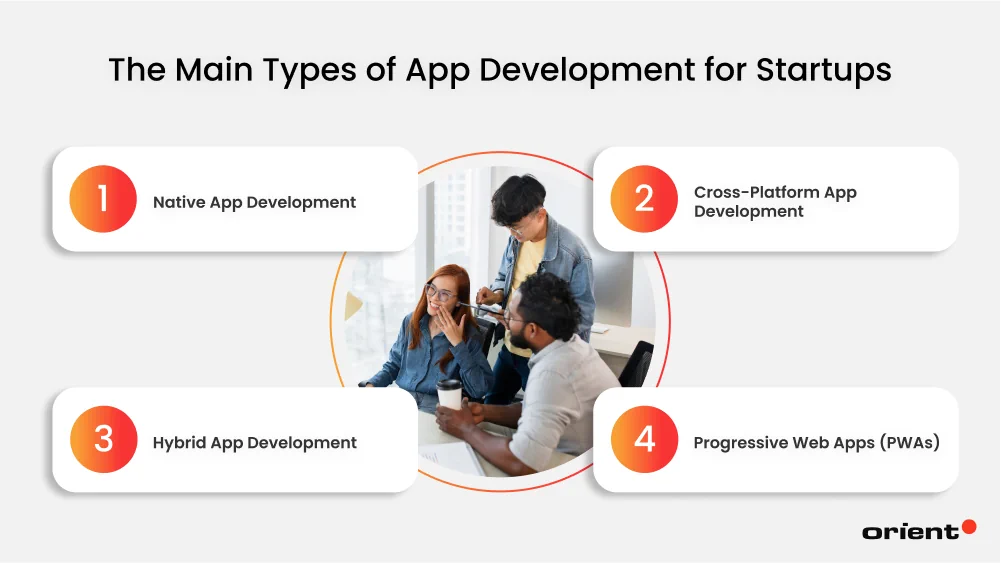
Native App Development
Native development means creating applications that target particular platforms: one that targets iOS with Swift or Objective-C, another that targets Android with Kotlin or Java. The apps are built on a per-operating system basis, enabling them to fully utilize the native UI elements and, arguably, optimize hardware options.
- Advantages: Native apps provide the most demanding performance and rapidity in the industry. They are highly integrated with the device-level functionalities such as camera APIs, biometric authentication, motion tracking, and GPS that lead to seamless and natural user interaction. Better sandboxing and encryption are also supported, and the security measures provided are stronger.
- Drawbacks: In this method, each platform needs to be developed differently, which increases the cost and lengthens the duration. Each of these features or updates will require being coded twice, in each of the systems. In addition, the acquisition of app developers who are competent in iOS and Android might strain early-stage budgets.
- Best Fit For: Startups that develop high-performance mobile games, apps that have significant sensor dependencies (e.g., a fitness tracking app or an augmented reality app), or flows that require UI fluidity and responsiveness (e.g., a finance or healthcare platform). Native apps perform exceptionally well when brand reputation and customer trust rely on reliability and user experience.
Cross-Platform App Development
The concept of cross-platform development revolves around developing a single codebase that is deployable on several operating systems. Such cross-platform frameworks are React Native (JavaScript), Xamarin (C#), and Flutter (Dart), all of which provide toolkits to render near-native interfaces and bind to common functions of popular devices.
- Advantages: Startups benefit due to a decreased cost of development and time of launch. Only a single codebase is performed, thus providing better possibilities to release changes and fix new bugs to all systems at the same time. This simplification reduces time-to-market and makes the reach of the users much broader on the launch day.
- Drawbacks: The performance is possibly not the same as that of really native apps and particularly performance-heavy graphics or sensor-driven apps. Platform-specific features may sometimes require access to other native modules or third-party plugins. Moreover, the ability to deliver the same “native feel” on different devices may be difficult, and this results in the possibility of affecting user perception.
- Best Fit For: Early-stage companies that are developing MVPs, apps with comparatively simple workflow, or sites aiming at goods delivery, social networking, or simple e-commerce. Cross-platform is a practical compromise when price performance and broad availability win over integration and interconnection.
Hybrid App Development
Hybrid apps are developed on popular web-based technologies (HTML, CSS, JavaScript) and run in native containers that enable them to run across platforms. This can be accomplished with frameworks such as Ionic and Apache Cordova, which basically allow packaging a web application inside a native shell so that they can be deployed on iOS and Android.
- Advantages: The speed of the development process is one of the most attractive features of a hybrid. The startups can use the available web development team to create mobile apps without hiring Android and iOS experts. Maintenance and upgrades are more effective and cheaper because they are done with the same codebase across all platforms. This makes it ideal for launching and iterating quickly.
- Drawbacks: Performance tends to be less refined than native or cross-platform ones. Hybrid apps are susceptible to slowing animations, unresponsiveness, and restricted access to more advanced device functionality, such as background location tracking or biometric authentication. Numerous hardware integrations are still dependent on outside plugins, which can cause complexity or even make them incompatible. Its user interface is also more generic than native apps.
- Best Fit For: Hybrid development is effective at content-focused apps (such as news or media-based), minimal functionality apps (including calculators or schedulers), and internal business applications (including employee dashboards or inventory trackers). It can also be extremely helpful in prototyping, so a startup can prototype ideas quickly without a large investment.
Progressive Web Apps (PWAs)
PWAs break down the boundary between mobile and web applications. They are web apps that act similarly to native apps, i.e., have offline functionality, push notifications, and the ability to be placed on the home screen of a device, all through the browser. Its distribution does not require an app store, and frameworks such as Workbox, Lighthouse, and PWA Builder allow even a small team to implement it.
- Advantages: PWAs have unparalleled flexibility and scope. They do not need users to download anything and can be worked on on a wide range of devices, including smartphones, tablets, and desktops. PWAs are instantaneously updated over the web, so startups can deploy bug fixes and additional features without going through an app store first. Development cost is also the cheapest compared to other mobile app methods, especially where a team is heavily web-savvy.
- Drawbacks: PWAs are limited to the deep functionality of devices. Features like Bluetooth, contact lists, and background services may not be supported or may work differently in different browsers. For users who are used to the smoothness and touchiness of native apps, PWAs may appear less immersive or polished. Moreover, the execution can be different depending on network conditions and the browsing engines.
- Best Fit For: PWAs work best in situations where content delivery is the priority, such as news pages, shopping websites, and event pages. They’re especially attractive to startups who don’t want to go through app store approval processes or be in front of users on any device in a moment with minimal friction.
Case Study: Real-world Examples of App Development
Several of the best tech leaders today started as a lean startup with intelligent decision-making regarding app development. To truly appreciate the strategic decisions behind successful app development for startups, it’s insightful to learn from these examples.
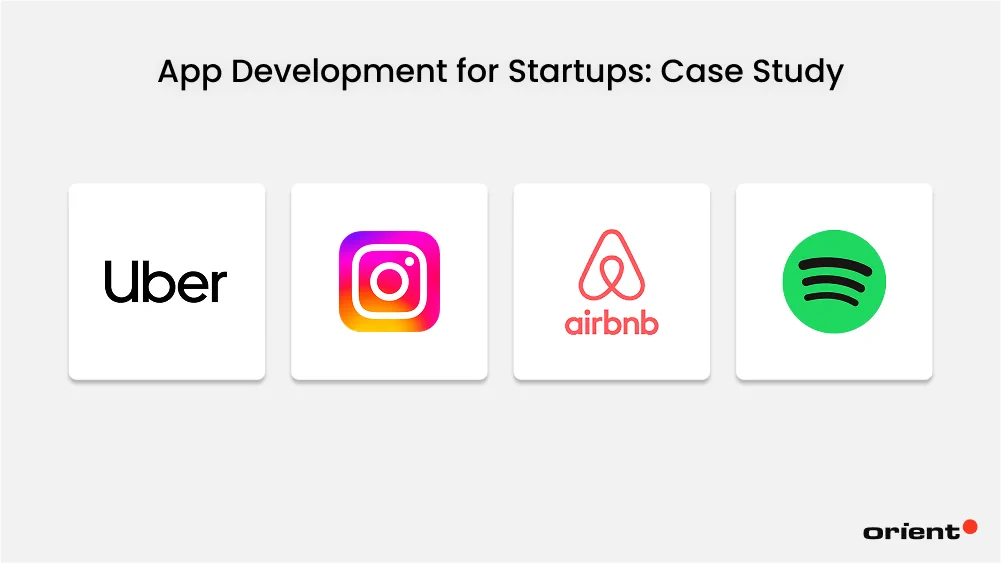
Uber
Uber, one of the most famous startups, started in 2009 with a mere iOS-based mobile application called UberCab. The initial design was a simplified interface that enables users to order a black car with a single tap. The early native development enabled Uber to manage smooth GPS tracking, constant driver notifications, and consistent payment integration, which was essential in establishing trust in the early adopters. With highly integrated UX and native functionality (such as maps and location tracking), Uber managed to design a frictionless experience that is quickly scalable to any number of cities.
Instagram is another outstanding example that began as a native photo-sharing application on iOS. When founders Kevin Systrom and Mike Krieger made important technical choices, Instagram was able to upload photos faster than competitors and provided smooth filters without excessive processing time lags. This made the app a premium experience regardless of inexpensive devices. They employed native image processing libraries and simplified UI, which were factors of viral growth. The success of Instagram highlights how fast and easy the design-first mentality can capture user loyalty in markets where the competition is intense.
Airbnb
Airbnb took a hybrid approach at the initial stages. Although its main platform was web-related, the mobile app also served as an essential resource, both to the guests and the hosts. The main priority of Airbnb app development was gaining trust: secure payment gateways, identity verification systems, and responsive communication channels were developed. Airbnb leveraged React Native to combine web technologies with mobile-first capabilities, making it extremely fast to scale while keeping its user experience consistent across devices.
Spotify
And of course, there is Spotify, which started as a desktop application but shifted to mobile using highly fashionable native applications, which added the ability to stream music with low latency and play it offline, which became the signature feature. The technical architecture of Spotify emphasized speed and continuous playback through its own-made audio engines way beyond generic frameworks. This performance commitment contributed significantly to its expansion, particularly in low internet connectivity areas.
Such examples illustrate how effective startup organizations can measure their app development decisions precisely by what their product will do (ride-hailing, sharing photos, hotel booking, and sound streaming). As a takeaway, the message to aspiring founders is quite straightforward: the dev decisions are not only technical but are also strategic actions that determine the rate of adoption and success of your application in the lives of your clients.
Technology Trends for Startup App Development in 2025
The transformative technologies reshape the app development environment of startups in 2025 by minimizing the cost of entry, stimulating progress, and developing user connections. Embracing such trends early, one could get a clearer advantage over the competition.
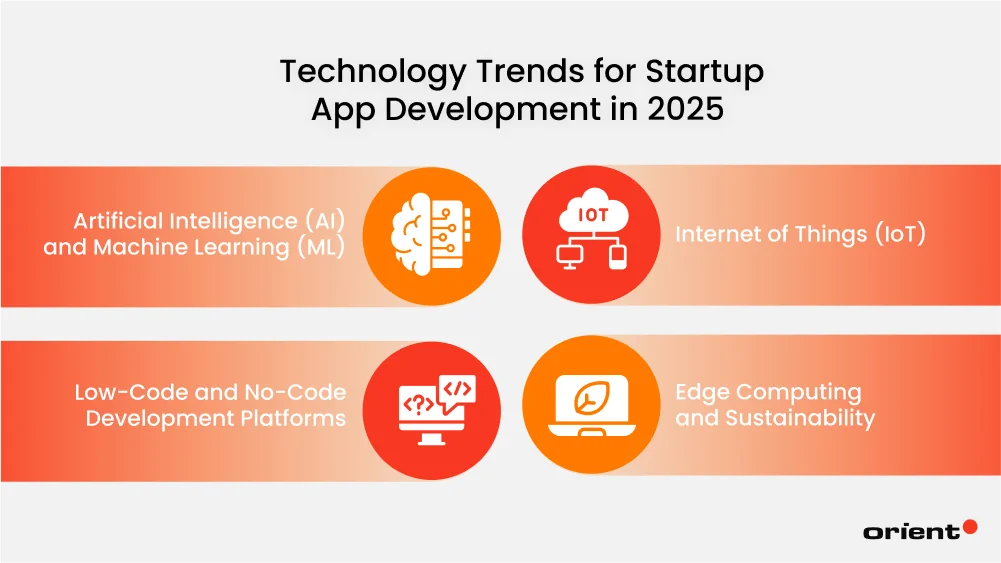
Artificial Intelligence (AI) and Machine Learning (ML)
The integration of AI and ML deserves to be remembered as one of the most significant transitions. Startup companies are integrating ML models into mobile apps where ML models dynamically customize based on personalization, forecasting, and intelligent automation. For example, fitness apps have started to use on-device ML to automatically adjust a user’s progress in the exercises, and e-commerce platforms rely on using AI to create individual product suggestions on the fly. Apple, Google, and other companies are making their pre-trained models available via platforms such as the Google ML Kit or Apple Core ML, allowing even smaller dev teams to run voice commands, intelligent search, and other functions on pre-trained data without the luxury of a complete data science department.
Internet of Things (IoT)
At the same time, IoT connectivity is opening up new app use cases to startups. Mobile applications act as a control center to monitor and control sensors deployed in each and every device, including wearables, smart home devices, etc. An example of a startup in home gardening could create an app that pairs with the involved soil moisture sensors and delivers automated irrigation. Infrastructure in 2025 shall enable low-latency communications using protocols such as MQTT and Thread, and even early-stage applications shall be able to comfortably deal with complex networks of devices.
Low-Code and No-Code Development Platforms
The ubiquity of adoption of low-code and no-code development tools is yet another game-changing evolution. Tools such as Adalo, OutSystems, and Bubble have now advanced to the stage where non-technical founders can create functional, visually pleasing apps that not only integrate with a database and have APIs and responsive design but also are often given the same drag-and-drop interface with modular logic blocks. Through this democratization of development, it is now possible to do quicker prototyping, lower the cost of development, and do iterations depending on the feedback provided by the users.
Edge Computing and Sustainability
In addition to the key trends, there are other trends that are going to create the future of app development in startups. Edge computing, a closely related technology to IoT, takes advantage of local computing to process data at, or near, the origin of data (as opposed to transferring it to a centralized cloud). This reduces latency and bandwidth overuse, which is critical to real-time use cases, such as augmented reality (AR) experiences, industrial automation, and highly responsive user interfaces.
Finally, there is the rise of sustainable app development. With increasing environmental awareness, startups are increasingly focusing on developing “green apps” through efficient code in terms of energy, cloud services powered by renewable energy sources, and designing features that encourage sustainable end-user practices. It’s all part of a broader trend towards responsible tech that appeals to environmentally aware consumers and investors.
Finding the Right Partner for Startup Mobile App Development
To launch a startup app, a brilliant idea is not the only thing you need; rather, you need a development partner who will be able to cater to your idea and your target audience, run at your cadence, and provide mature technical advice. With countless firms claiming expertise, finding one that truly aligns with your goals is crucial.
Top Startup App Development Companies
Here are some standout firms known for helping startups succeed:
| Firm Name | Location | Specialty | Notable Clients / Features |
|---|---|---|---|
| Orient Software | Viet Nam | Custom software development | High client satisfaction |
| Utility | New York, USA | UX-focused mobile apps | Airbnb, Forbes |
| Innowise | Warsaw, Poland | Cross-platform & native apps | Finance, healthcare sectors |
| Sysmetica LLC | Global | iOS, backend systems, QA | Strong technical reviews |
| EMURGO | Tokyo, Japan | Blockchain & mobile development | Cardano blockchain |
Although the ideal partner is relative to your needs, some firms have gathered a good reputation for their work with startups and provide a variety of specialties and techniques.
- Orient Software (Viet Nam): Founded in Asia, Orient Software specializes in the development of customized software, offering a solution in the array of technological stacks. Our focus on the deployment of custom applications usually results in good client satisfaction, meaning that we tend to pay a lot of attention to the needs and demands of the clients. The approach of Orient Software would be useful when startups opt for a much more personalized solution that would closely match their individual business model.
- Utility (New York, USA): A well-known UX-centered mobile app development company with a heavy focus on user experience design, creating easy-to-manage and fun online products. They have demonstrated their capacity to produce refined, user-focused programs that appeal to a wide spectrum of individuals in their partnership with high-profile brands such as Airbnb and Forbes. Utility would appear to be a perfect option in a start-up where a better user experience is a key differentiator and a decisive value attracting and maintaining users.
- Innowise (Warsaw, Poland): With operations in Eastern Europe, Innowise focuses on both cross-platform and native app development, giving startups flexibility on whether to start with general coverage or tightening in specifically on a platform. They have a good track record in entering various fields, especially in finance and healthcare, and hence are applicable to startups in the regulated industries where high security, compliance, and expert knowledge are equally crucial.
- Sysmetica LLC (Global): Sysmetica has a wide range of skills in iOS applications, powerful backends, and quality assurance (QA). They serve quite well when it comes to startups that require end-to-end technical build-out, including the front-end app itself, the server-side architecture, and infrastructure, with all the detailed testing.
- EMURGO (Tokyo, Japan): As far as startups that intend to enter the decentralized technology field are concerned, EMURGO is notable due to its specificity in blockchain and mobile development. The company is a great solution if the startup starts with a core innovation leveraging blockchain technology, like DeFi applications, NFT platforms, or verifiable digital identity services.
Key Criteria for Evaluation
In addition to locating possible partners, a rational assessment according to certain criteria is necessary so that there is a successful partnership:
- Portfolio and Experience: Don’t just stop at the amazing visual aspect. Make sure they have experience in your industry. Seek quantifiable customer outcomes of past clients of the startup company. How did their employment assist them in user development, capital raises, or other performance measures? Ask for elaborate case reports on the problem, solutions applied, and results. Should there be live apps that we can test in app stores?
- Technical Expertise: Determine whether they have experience with the actual stack you would be utilizing. Measure their skills in backend programming (e.g., Node.js, Python, Ruby on Rails), cloud (AWS, Google Cloud Platform, Azure), database (SQL, NoSQL), and their ability to develop secure APIs. In case you need integration of AI/ML, ask about their machine learning engineering pool and data science.
- Communication and Transparency: A successful partnership is based on the ability to communicate effectively. Assess the project management practices they have, how often they update, and how communication is defined (Slack, email, video calls). Seek proactive information that would communicate any obstacles or possible delays, rather than just the updates. What is important is the transparency of team structure, roles, and decision-making.
- Cost Models: Know clearly how they will charge you and ensure that they fit your budget and the type of project. Standard examples are:
- Fixed-Price: This is applicable to MVPs that are well-defined or have a fixed scope. Gives the certainty of cost but is not flexible.
- Time & Materials (T&M): Most suitable in agile projects where the scope is likely to change. It is flexible, and one has to keep a strict eye on his/her budget.
- Dedicated Team: Best suited to long-term relations in which the startup effectively outsources a team of programmers to keep developing.
- Clarify what it includes (e.g., QA, project management, design), any possible hidden charges, and what changes in scope or other unexpected problems can and will be done and charged.
- Post-Launch Support: The launch of the app is just a start. Ask about post-launch maintenance plans (bug fixes, security, patches, etc.), their ability to continue adding features, and the way in which they plan their scalability to increase the number of users. Do they provide analytics integration or App Store Optimization (ASO) to increase visibility? When the partnership is oriented to the long term, both parties will gain.
The Power of Cultural Fit and Vision Alignment
Although technical skills and experience are a must, a real cultural fit and intimate knowledge of how you want to proceed with your startup can be more important than off-the-shelf ratings such as being a top ranking on some list. Cultural fit is the correspondence of values, work ethic, communication styles, and problem-solving approaches of your team with that of the agency team.
Most importantly, does your development partner actually get your vision? It does not only mean implementing a list of features. Are they curious enough to inquire about your target market, what makes you unique, how you will monetize it, and your long-term business objectives? A partner who takes the time to know why you are developing an app, not just what you are developing, will create a technically solid solution that is also strategically on target with your business goals, which will put your chances of success in the market way up.
This is actually the very all-embracing and client-oriented philosophy that characterizes partners such as Orient Software. Our collaborative workforce focuses on open communication channels, flexible approaches, and a common mood to solve problems, so our team will blend perfectly with your group. In addition to technical performance, our engagement process goes far beyond, down into the details of your business model, prodding those probing questions about your business customer, business competitors, and business growth goals in the years to come.

